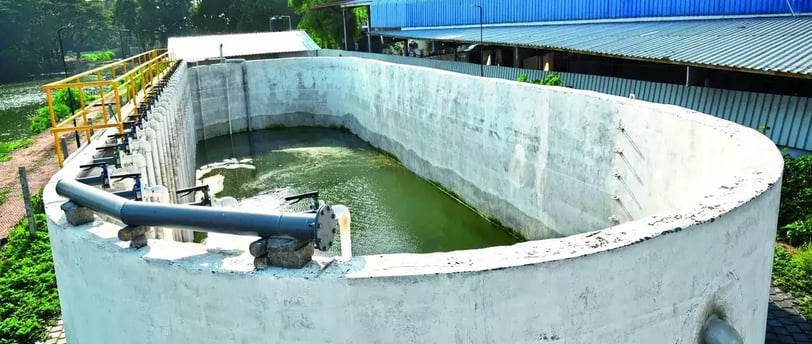STP Essential for Sustainability
A Sewage Treatment Plant (STP) is a facility designed to treat the sewage or wastewater produced by residential, commercial, and industrial establishments- remove contaminants -make wtaer safe
Prime Pollution Control Service
6/17/20243 min read


Understanding Sewage Treatment Plants (STP): Essential for Sustainable Urban Living
Urbanization and industrialization have brought numerous benefits to human civilization. However, these advancements also come with significant challenges, particularly concerning environmental sustainability and public health. One crucial component of addressing these challenges is the efficient management of wastewater. Sewage Treatment Plants (STPs) play an indispensable role in this context, ensuring that the wastewater generated by human activities is treated and made safe before being released back into the environment.
What is a Sewage Treatment Plant (STP)?
A Sewage Treatment Plant (STP) is a facility designed to treat the sewage or wastewater produced by residential, commercial, and industrial establishments. The primary objective of an STP is to remove contaminants from the wastewater, ensuring that it is safe for discharge into water bodies or for reuse in various applications. The treatment process involves multiple stages, each targeting different types of pollutants.
The Treatment Process: A Step-by-Step Guide
Preliminary Treatment: This initial stage involves the removal of large solids and debris from the wastewater through screening and grit removal. This step is crucial for protecting the downstream treatment processes from damage and clogging.
Primary Treatment: In this stage, the wastewater is allowed to settle in large tanks. During this process, heavier solids sink to the bottom, forming sludge, while lighter materials float to the surface and are skimmed off. The primary treatment primarily targets the removal of suspended solids and organic matter.
Secondary Treatment: This stage focuses on biological treatment processes to degrade organic pollutants. It involves the use of microorganisms that consume organic matter as food, converting it into carbon dioxide, water, and energy. Common secondary treatment methods include activated sludge processes, trickling filters, and bio-towers.
Tertiary Treatment: This advanced treatment stage aims to remove remaining inorganic compounds, nutrients (such as nitrogen and phosphorus), and pathogens. Techniques used in tertiary treatment include filtration, disinfection (using chlorine or ultraviolet light), and nutrient removal processes.
Sludge Treatment and Disposal: The sludge generated during primary and secondary treatment undergoes further processing to reduce its volume and potential environmental impact. This can include digestion (a biological process that breaks down organic matter), dewatering (removing excess water), and sometimes incineration or composting.
We provide our consultancy service for STP plant installation & monitoring for you
Why STPs are Essential
Environmental Protection: STPs prevent untreated sewage from contaminating natural water bodies, thereby protecting aquatic life and maintaining the ecological balance of rivers, lakes, and oceans.
Public Health: Proper treatment of wastewater eliminates harmful pathogens and pollutants, reducing the risk of waterborne diseases and safeguarding community health.
Resource Recovery: Modern STPs are increasingly designed to recover valuable resources from wastewater, such as biogas (from anaerobic digestion of sludge), treated water for irrigation and industrial use, and nutrients that can be used as fertilizers.
Regulatory Compliance: Many countries have stringent regulations regarding the discharge of wastewater. STPs help municipalities and industries comply with these regulations, avoiding legal penalties and promoting sustainable practices.
Innovations in STP Technology
The field of wastewater treatment is continually evolving, with new technologies and approaches emerging to enhance the efficiency and sustainability of STPs. Some of the noteworthy innovations include:
Membrane Bioreactors (MBRs): Combining biological treatment and membrane filtration, MBRs offer high-quality effluent and are particularly effective in removing pathogens and micropollutants.
Advanced Oxidation Processes (AOPs): These processes use powerful oxidizing agents to break down complex organic molecules and emerging contaminants that are resistant to conventional treatment methods.
Resource-Oriented Sanitation (ROS): This approach focuses on the recovery and reuse of resources from wastewater, transforming STPs into resource recovery facilities that produce clean water, energy, and nutrients.
Conclusion
Sewage Treatment Plants are a cornerstone of modern urban infrastructure, ensuring that our cities can grow and thrive without compromising environmental and public health. As technology advances and the need for sustainable practices becomes ever more pressing, STPs will continue to play a critical role in managing wastewater, protecting our natural resources, and fostering a healthier planet for future generations. Investing in and supporting the development of efficient and innovative STP technologies is essential for a sustainable and resilient urban future.
